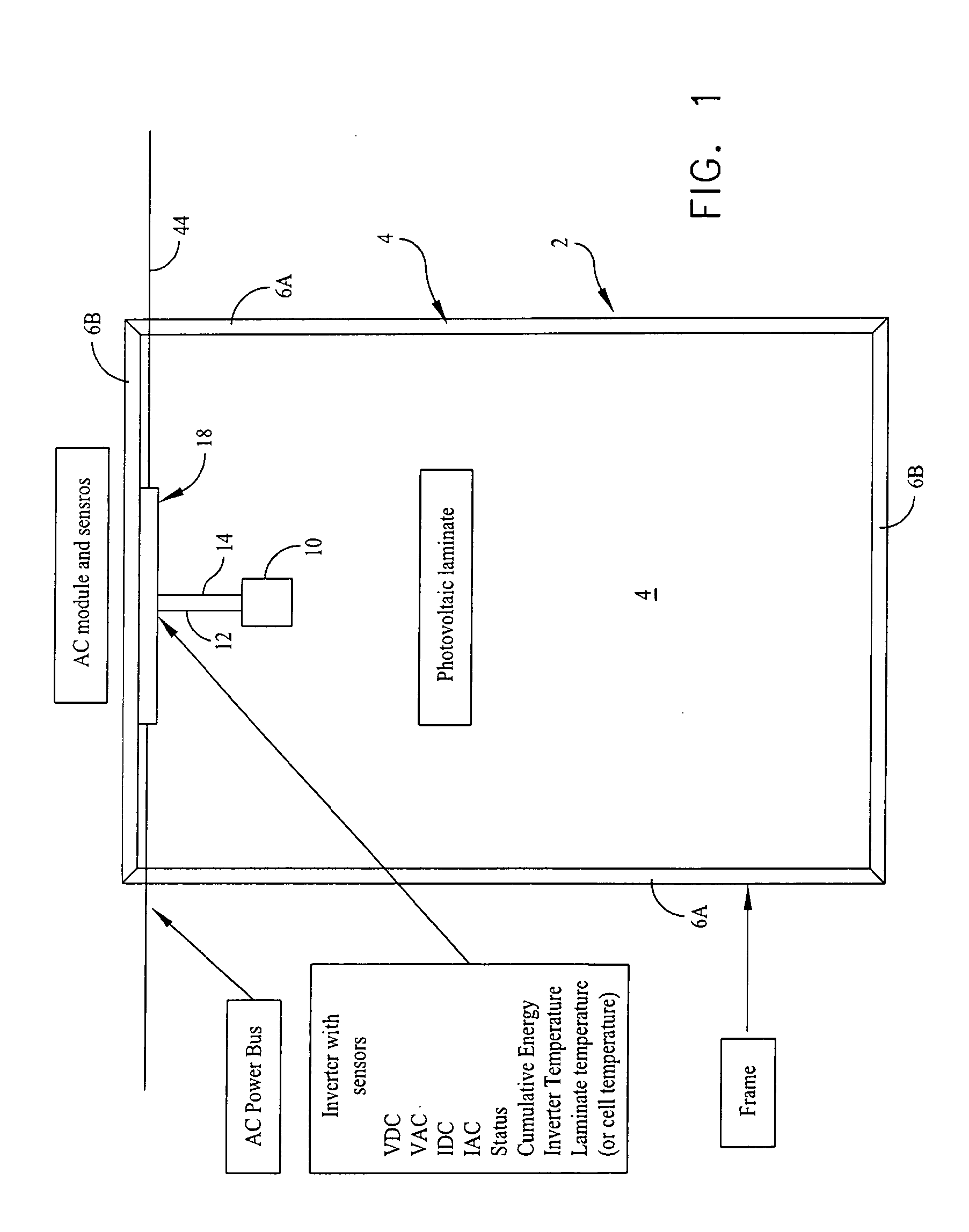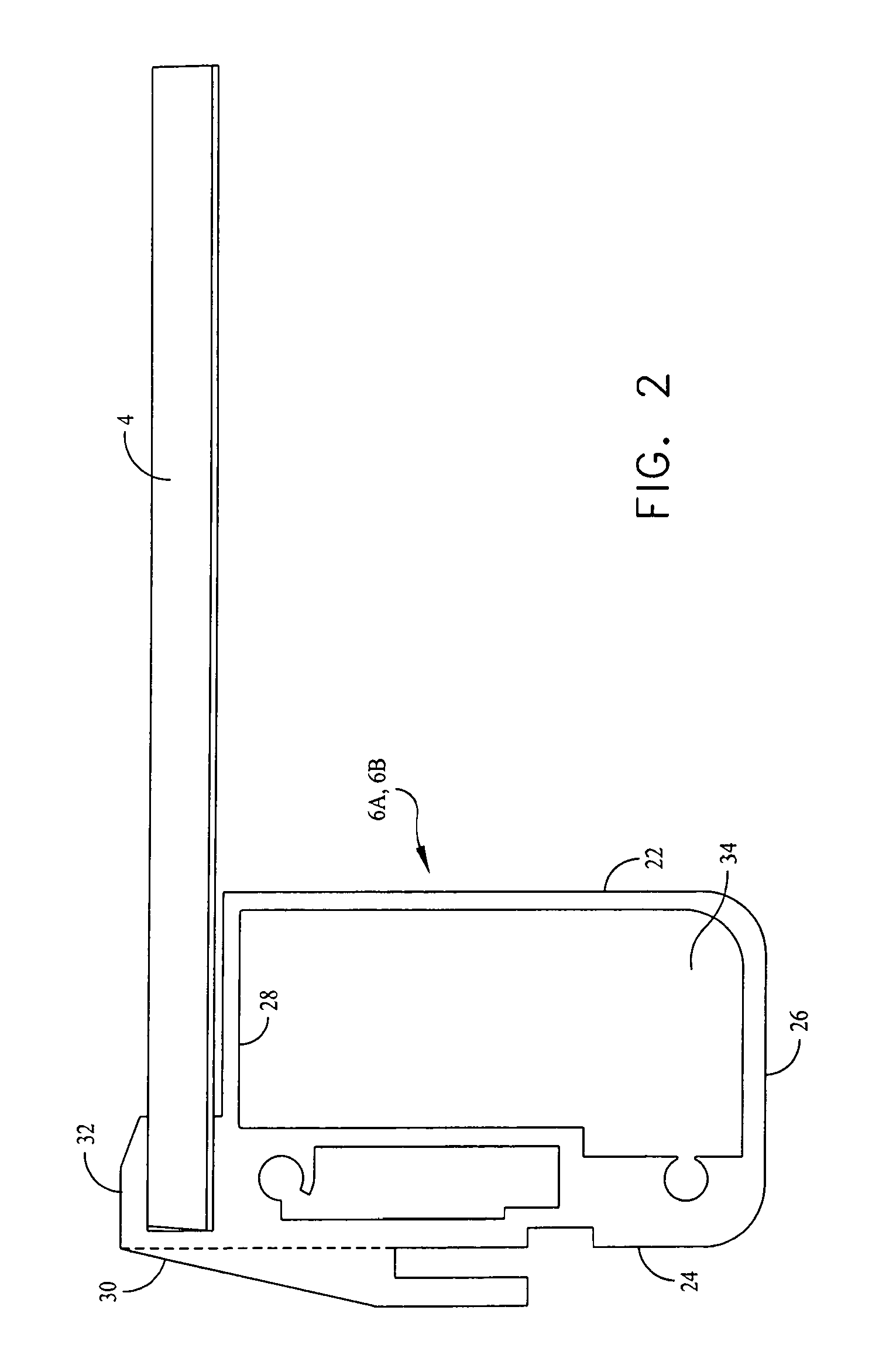Data acquisition apparatus and methodology for self-diagnosing of AC modules
a data acquisition and self-diagnosis technology, applied in the direction of dc-ac conversion without reversal, process and machine control, instruments, etc., can solve the problems of inherently noisy environment of ac power lines, power line communications in residential environments, and performance faults in real-world photovoltaic systems
- Summary
- Abstract
- Description
- Claims
- Application Information
AI Technical Summary
Benefits of technology
Problems solved by technology
Method used
Image
Examples
Embodiment Construction
[0033]The present invention is premised on the provision of a plurality of PV modules and a plurality of electrical inverters each disposed to convert the DC power output of an individual module to AC power. Each PV module may comprise a single PV laminate or a plurality of PV laminates. Details of construction of the laminates are omitted since the specific construction of the laminate is not critical to the invention. Accordingly it is to be understood that various forms of PV laminates may be used in the practice of the invention. By way of example but not limitation, the PV laminates may be manufactured as disclosed by U.S. Pat. Nos. 4,499,658, issued Feb. 19, 1985 to K. J. Lewis for Solar Cell Laminates; U.S. Pat. No. 5,733,382, issued Mar. 31, 1998 to J. I. Hanoka for Solar Cell Modules and Method of Making Same; U.S. Pat. No. 5,593,532, issued Jan. 14, 1997 to J. Falk et al. for Process of Manufacturing Photovoltaic Modules; and U.S. Patent Application Publication No. US 2006...
PUM
 Login to View More
Login to View More Abstract
Description
Claims
Application Information
 Login to View More
Login to View More - R&D
- Intellectual Property
- Life Sciences
- Materials
- Tech Scout
- Unparalleled Data Quality
- Higher Quality Content
- 60% Fewer Hallucinations
Browse by: Latest US Patents, China's latest patents, Technical Efficacy Thesaurus, Application Domain, Technology Topic, Popular Technical Reports.
© 2025 PatSnap. All rights reserved.Legal|Privacy policy|Modern Slavery Act Transparency Statement|Sitemap|About US| Contact US: help@patsnap.com



